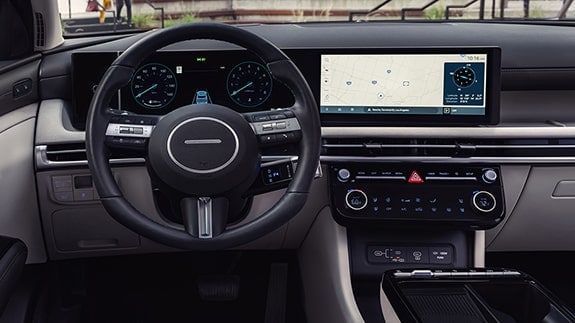My uncle Wayne drove a used 1963 Dodge Dart some years ago. Awful thing. Slant-6 with three on the tree, I think. Bug-eyed and unattractive, for sure. I was way too young to drive at the time and for that I am eternally grateful.
But the 2013 Dodge Dart is not that. Not even a little bit. Nor is it a warmed-over and resurrected Neon. No, the new Dodge Dart is instead an Americanized version of an acclaimed sport compact from Europe, the Alfa Romeo Giulietta.
Both cars are built on Fiat's C-segment platform, though the Dart uses a slightly modified version known as CUSW, which stands for C-segment/Compact (take your pick), United States, Wide. In reality it's more about length, because the Dart's front and rear axles have been spaced 2.7 inches farther apart to gain sufficient backseat legroom. But the footprint is wider, too, if only by a half inch or so. The Alfa already had wide track widths.
You won't be able to make out those differences here, and the four suspension corners are said to be physically the same, with many interchangeable parts. Well, that's true of the visible hardware, anyway. The suspension tuning, the "software" aspect consisting of largely invisible variables like spring rate choices, damper settings and internal tire construction, has been tweaked to suit North American roads, customer tastes and our penchant for all-season tires.
So the things you're about to eyeball once we hike our 2013 Dodge Dart up on our Rotary two-post lift are pretty much the same as what you'd see if we were in Italy and this were an Alfa Romeo Giulietta.

Up front the 2013 Dodge Dart rides on MacPherson struts, far and away the most common suspension found on front-drive compacts.

The coil-over strut assembly attaches to a beefy aluminum front knuckle by way of a pinch-clamp joint, which means there's no wiggle room or "crash bolt" method for autocrossers to exploit to gain a little negative camber.

Down below, the lower control arm (green) is made of steel. Farther up, the stabilizer bar's drop link (yellow) is direct-acting, which means it connects directly to the strut body to get the best possible motion ratio and fully exploit what the stabilizer bar has to offer.

The L-shaped lower control arm bolts onto an intricate aluminum subframe that spans to the other side of the car.

Here we can see one of several places the subframe (white) bolts directly to the body of the car. The steering rack and stabilizer bar (yellow) live behind the axle centerline, and both are cradled by the subframe.

The Dart's aluminum knuckle carries a single-piston sliding brake caliper. And it looks like Torx-head bolts are popular at Alfa. No big deal. You'll just need to spend a few bucks to add a couple of Torx sockets to your toolbox if you ever plan to replace struts, wheel bearings or brake rotors.

Those ventilated front rotors, by the way, are 12 inches in diameter and 1.1 inch thick.

Moving to the rear, it's hard to tell what we've got without getting closer. So far, all we can see is a big aluminum trailing arm.

Better, but it's still hard to tell what we've got. It's clearly a multilink of some sort, but all we can make out are these two transverse links.

Now we're getting somewhere. Here we can see two long transverse links, one upper and one lower. Together they orient the wheel's camber angle and brace the trailing arm laterally to manage toe-in. There are no other links. The big trailing arm assembly, which houses the wheel bearing and hub, takes care of fore-aft wheel location and brake torque.
Meanwhile, the shock absorber (yellow) connects to the lower link. And those big holes tell us the trailing arm is hollow.

Both links angle forward a good deal and tie into another aluminum subframe. This rear layout is most similar to that of the current crop of Mini Cooper products, and the angled orientation probably has to do with the packaging of the muffler on the Giulietta which, like the Mini, is a hatchback with a short rear overhang.
But the spring location is quite different here. Mini uses a coil-over and it's mounted ahead of the rear axle. Both factors are potentially unfriendly to interior space in small cars. The Dart's rear spring is separate from the slender shock absorber and acts directly on the trailing arm. And it does so behind the axle centerline, where it's well away from the passenger compartment (and under the trunk). A spring motion ratio that's oddly greater than 1-to-1 is a by-product of all this.

The rear stabilizer bar link attaches to the edge of the trailing arm's spring pad, so it moves in 1-to-1 (or better) fashion with the wheel and tire, too.

The aforementioned "slender shock absorber" has a urethane bump stop built into its upper mounting point.

You want a rear camber adjustment? Unlike our Scion FR-S and most Subarus, the Dart's got one in the form of this eccentric on the outboard end of the lower lateral link. Easy access, too.

The Dart's rear brakes consist of a single-piston sliding caliper and 10.4-inch solid rotors that are 0.4-inch thick.

Now we're starting to get to one of the major differences between the Dodge Dart and the Alfa on which it's based. The difference, however, is not the 45.6-pound combined weight or the size of the 225/45R17 tires and 17-by-7.5-inch aluminum alloy rims.
The key difference is this: The Dart's rubber is of the all-season variety. Summer tires, a.k.a. three-season tires, are standard-issue in most of Europe, where drivers are more inclined to want the best tires they can get in summer and winter. This means, of course, there's a set of snow tires kicking around somewhere.
Thing is, they're right. I painstakingly quantified the benefits of each tire type about three years ago, and I'm personally over and done with all-season tires. A decent set of summer tires, even in the stock size on these very wheels, could really wake up this car.

Finally, this is what they call a "tell," and I almost glossed over it until photographer Scott Jacobs and I started to remount the tires. Lug bolts are common on European brands but are unheard of on American nameplates. Each has advantages and I go back and forth on whether I love lug bolts or loathe them (loathe is currently winning), but their presence here is but one subtle sign of just how much Alfa Romeo Giulietta lurks under the skin of the 2013 Dodge Dart.


